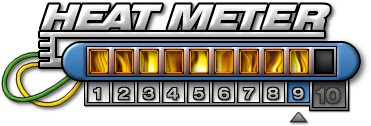|
There are a
couple of things you will not in these
tests. With the BX Test Bed, we were only
tested up to 1024X768 in both Color
Depths. Why? Because we were getting
punchy quite frankly, from all the benchmarking
( each test run three times for verification)
and 1600X1200 is not all that playble for any
board in Quake 3.
However, just for
giggles, we decided to throw in a few scores on
the VIA setup while overclocked and running the
NVidia 5.08 drivers (no the 5.13 drivers were
not available at the time of these tests).
Consider this a bonus! :) This
should give you an idea of what some serious
tweaking can bring you with this board.
With these drivers you can enable FSAA (Full
Scene Anti-Aliasing) with the GeForce but you
would want to play that way. The frame
rate slows to a crawl. NVidia needs to
work on this one and these drivers are not
"officially" released or
supported. As a result, you can't expect
things to be optimized. Can you say
NV15? :)
Finally, we were
VERY impressed by the scores of this board while
heavily overclocked at 155/190. These
numbers put it in the ballpark of a DDR
card. Sure, a DDR GeForce still beats the
above scores handily but for an SDR card, you
can't go wrong with this kind of performance.
Here are a few
scores from that D3D infused CPU hog of a game,
Unreal Tournament.

Don't
get me wrong, UT is a great game and looks
gorgeous but what a frame rate crusher!
Never the less, great scores were turned in by
the GA-GF2560

Hot
Stuff? We think so!
Gigabyte
has once again delivered a product that goes
above and beyond the call of duty with respect
to quality and performance. We would have
liked more up to date drivers with more features
as well as full licensed DVD software but the
bundle was adequate. All told, the
GA-GF2560 delivers powerful performance within
the GeForce SDR Graphics arena.
Availability of the product on line is spotty
but if you are able to find one, it is sure to
be cost competitive as have previous Gigabyte/NVidia
based products. The only reason we didn't
give this card a perfect score was the slightly
light offering on the software side of the
product. Regardless, this product is
indeed, HotHardware.
We
give the Gigabyte GA-GF2560 a Hot Hardware Heat
Meter Rating of

|